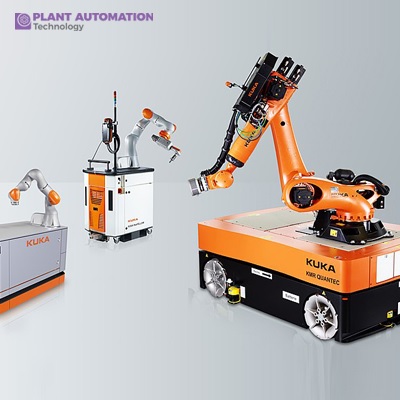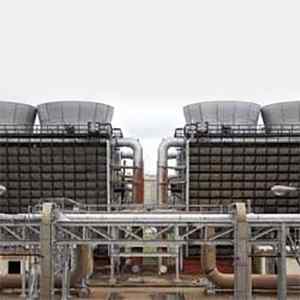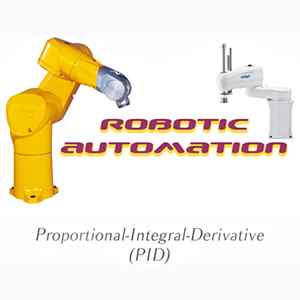The Role of Autonomous Mobile Robots (AMRs) In Modern Manufacturing

Autonomous Mobile Robots (AMRs) have emerged as transformative entities in modern manufacturing, heralding a new era of efficiency, precision, and automation. As industries embrace digital transformation and seek ways to streamline processes, AMRs have become indispensable assets in achieving these goals. In this comprehensive exploration, we delve into the multifaceted role of AMRs in modern manufacturing, examining their impact on robotics process automation, smart logistics, lean manufacturing, and the broader landscape of smart factories.
Robotics Process Automation (RPA) and AMRs
Robotics Process Automation (RPA) is a cornerstone of digital transformation, aiming to automate repetitive tasks and streamline operations. AMRs play a crucial role in RPA by executing tasks autonomously, such as material handling, inventory management, and transportation within manufacturing facilities. By integrating AMRs into RPA workflows, companies can achieve higher efficiency, reduced errors, and increased scalability in their operations.
AMRs and Smart Logistics
In the realm of smart logistics, AMRs are revolutionizing the movement of goods within warehouses and distribution centers. These automated guided vehicles navigate through dynamic environments, optimizing paths, and avoiding obstacles to deliver materials precisely where they are needed. This level of automation not only improves operational efficiency but also enhances safety by reducing the need for manual labor in hazardous or strenuous tasks.
Lean Manufacturing and Just-in-Time Manufacturing with AMRs
Lean manufacturing principles focus on minimizing waste and maximizing value throughout the production process. AMRs align seamlessly with these principles by enabling just-in-time manufacturing, where materials and components are delivered precisely when needed, eliminating excess inventory and reducing storage costs. Moreover, AMRs contribute to the 5S system in manufacturing industry – Sort, Set in Order, Shine, Standardize, and Sustain – by maintaining cleanliness, organization, and efficiency on the factory floor.
The Evolution of Robotics Engineering
Robotics engineering has undergone significant advancements with the advent of AMRs. These robots are designed to be agile, adaptable, and intelligent, capable of navigating complex environments and collaborating with humans safely. The integration of sensors, AI algorithms, and cloud connectivity has elevated AMRs to not just automate tasks but also to learn from data, optimize routes, and make real-time decisions, enhancing their utility in diverse manufacturing settings.
AMRs in the Context of Smart Manufacturing
Smart manufacturing encompasses the convergence of digital technologies, data analytics, and automation to create interconnected, intelligent production systems. AMRs play a pivotal role in smart manufacturing by facilitating real-time data collection, predictive maintenance, and agile production processes. Their ability to communicate with other smart devices and systems enables seamless coordination and synchronization, leading to enhanced productivity and agility in manufacturing operations.
The Synergy between AMRs and Human Workforce
Contrary to the misconception of automation replacing human workers, AMRs complement and enhance the capabilities of the human workforce. By automating repetitive, physically demanding tasks, AMRs allow human workers to focus on more complex, creative, and strategic aspects of production. This symbiotic relationship fosters a work environment where humans and machines collaborate synergistically, driving innovation and efficiency.
The Integration of AMRs in Supply Chain Optimization
One of the key areas where AMRs are making a significant impact is in supply chain optimization. With the rise of e-commerce and the increasing demand for faster order fulfillment, companies are turning to AMRs to streamline their logistics operations. These robots can navigate through warehouses efficiently, picking and packing items with precision and speed. By integrating AMRs into their supply chain workflows, companies can reduce order processing times, improve inventory accuracy, and enhance overall customer satisfaction.
Enhancing Workplace Safety and Ergonomics
AMRs are also playing a crucial role in enhancing workplace safety and ergonomics. In manufacturing environments, where heavy lifting and repetitive tasks are common, AMRs can take on the burden of transporting materials, reducing the risk of injuries for human workers. Furthermore, AMRs can access hard-to-reach or hazardous areas without putting human workers in harm's way, making them invaluable assets for maintaining a safe and healthy work environment.
Real-Time Monitoring and Data Analytics
The capabilities of AMRs extend beyond physical tasks; they also contribute to real-time monitoring and data analytics in manufacturing operations. These robots are equipped with sensors that gather valuable data on inventory levels, equipment status, and environmental conditions. By analyzing this data, companies can gain insights into their operational efficiency, identify areas for improvement, and make data-driven decisions to optimize production processes further.
The Role of AMRs in Agile Manufacturing
Agile manufacturing is a strategy that emphasizes flexibility, adaptability, and responsiveness to changing market demands. AMRs align perfectly with this approach by providing on-demand automation that can be quickly reconfigured to meet shifting production needs. Whether it's re-routing materials in response to supply chain disruptions or adapting to changing product specifications, AMRs enable companies to maintain agility and stay competitive in dynamic markets.
Collaborative Robotics and Human-Robot Interaction
The concept of collaborative robotics, where humans and robots work together in shared workspaces, is gaining traction in manufacturing. AMRs are at the forefront of this trend, showcasing advanced capabilities in human-robot interaction. These robots can collaborate with human workers seamlessly, whether it's assisting in assembly tasks, transporting materials, or providing real-time data feedback. This collaborative approach not only enhances productivity but also fosters a positive work culture centered around innovation and teamwork.
The Future of AMRs and Manufacturing
Looking ahead, the role of AMRs in modern manufacturing is poised for further evolution and expansion. Advances in AI, machine learning, and robotic capabilities will enhance the autonomy, intelligence, and adaptability of AMRs, making them even more versatile and valuable in diverse industrial settings. Furthermore, the integration of AMRs with emerging technologies such as 5G connectivity, edge computing, and augmented reality will unlock new possibilities for enhanced productivity, real-time insights, and immersive user experiences in manufacturing.
In conclusion, Autonomous Mobile Robots (AMRs) have emerged as indispensable assets in modern manufacturing, driving automation, efficiency, and agility across diverse industries. Their role in robotics process automation, smart logistics, lean manufacturing, and smart factories underscores their transformative impact on the industrial landscape. As AMRs continue to evolve and innovate, they will play a pivotal role in shaping the future of manufacturing, enabling companies to thrive in an increasingly competitive and dynamic global market.










